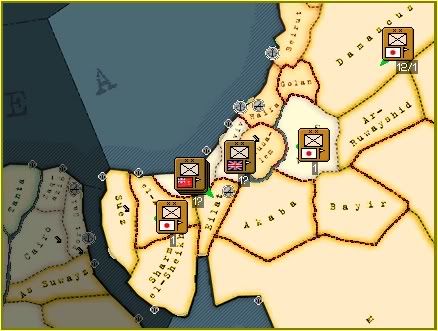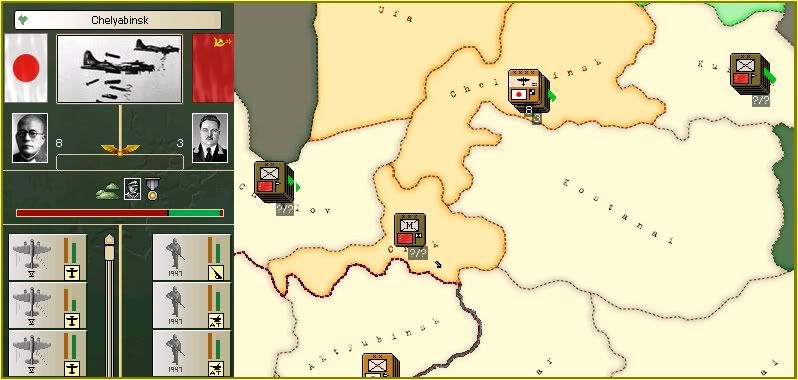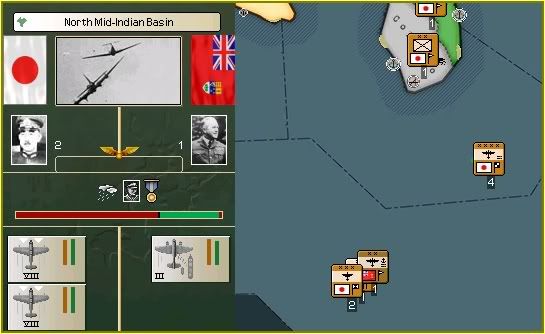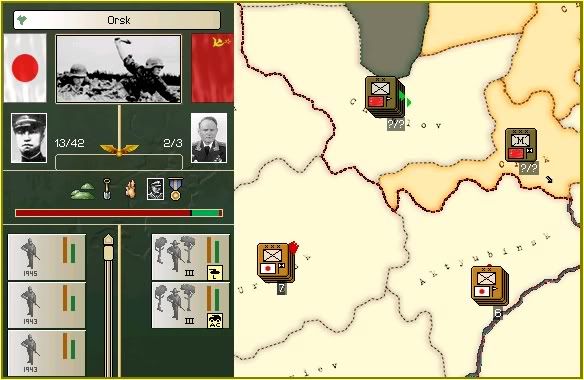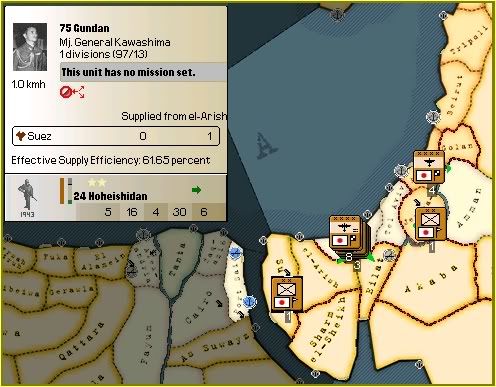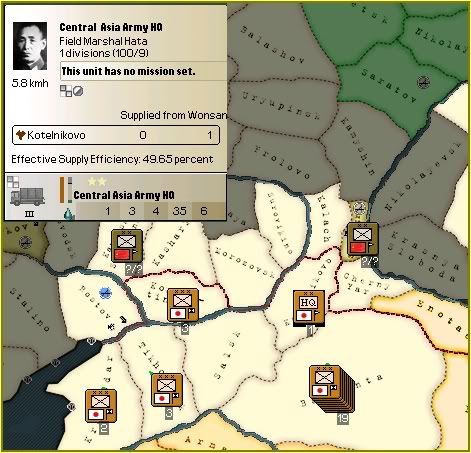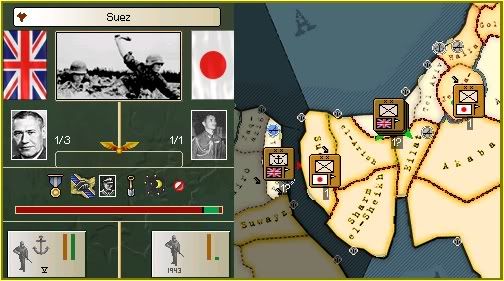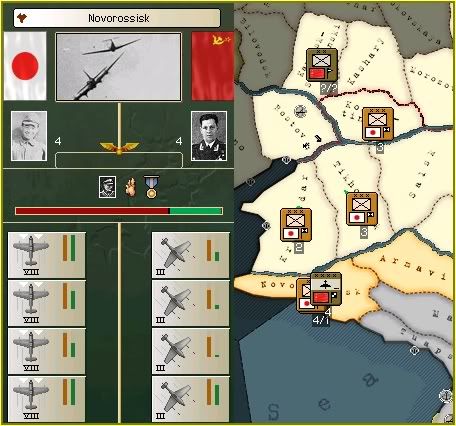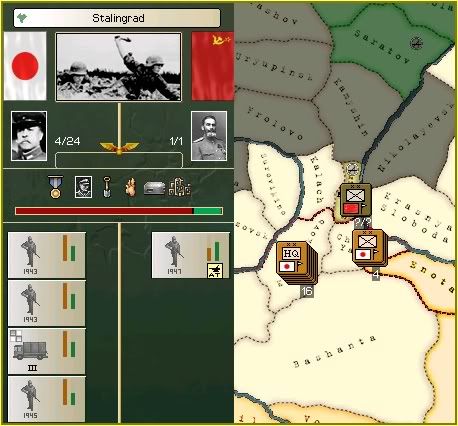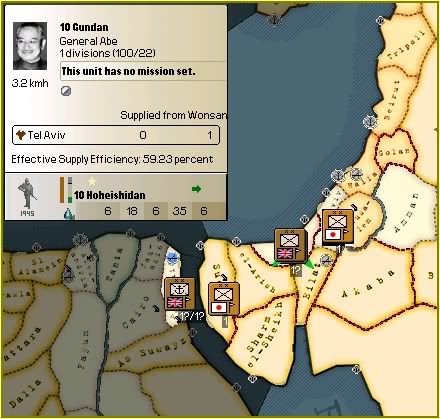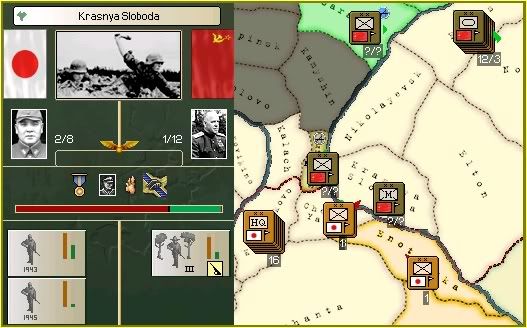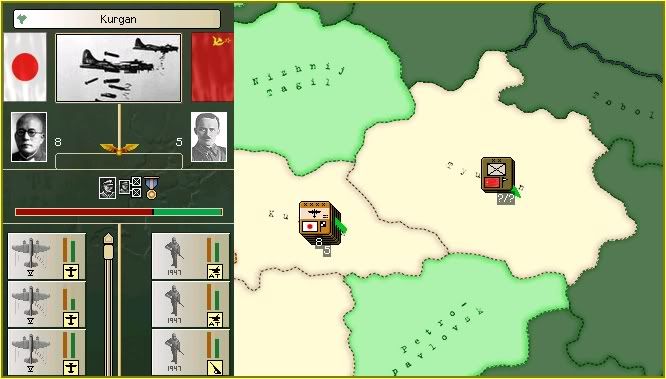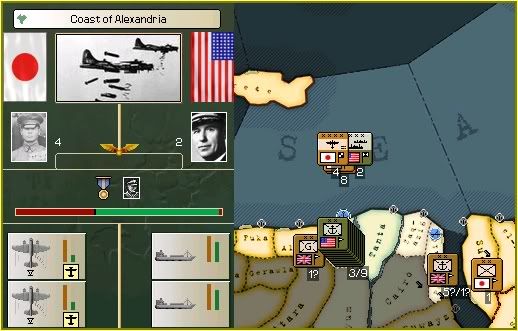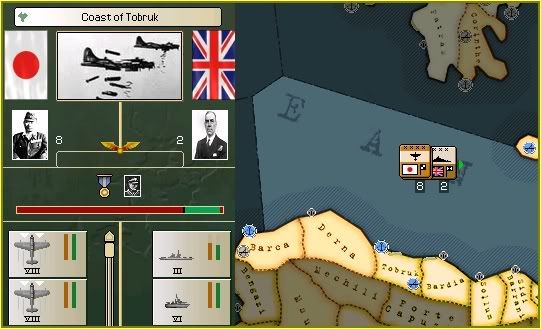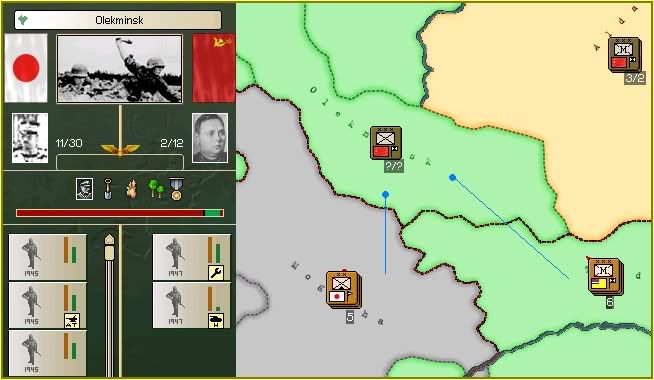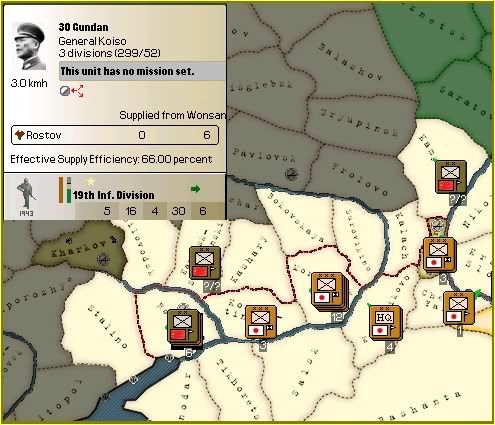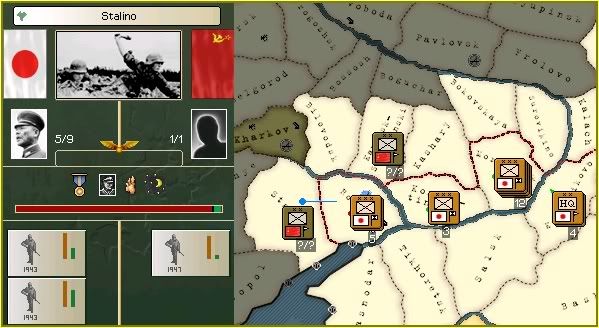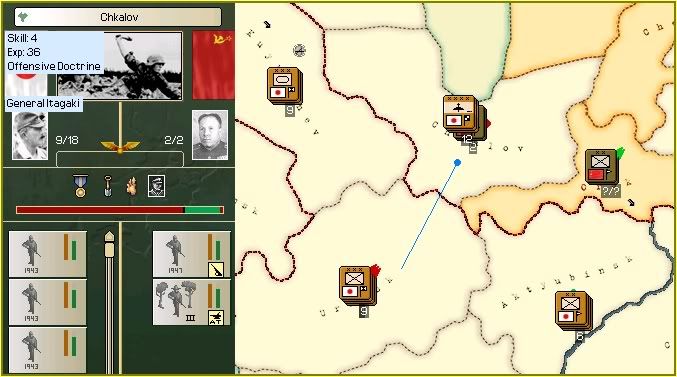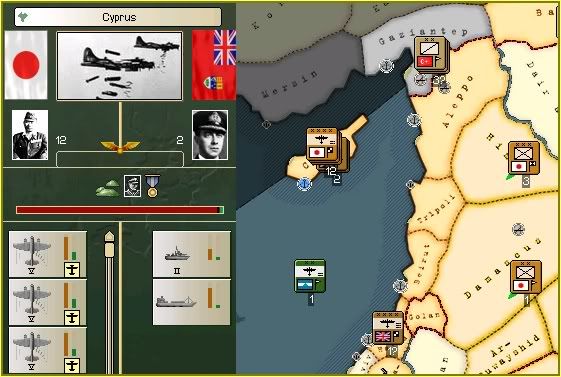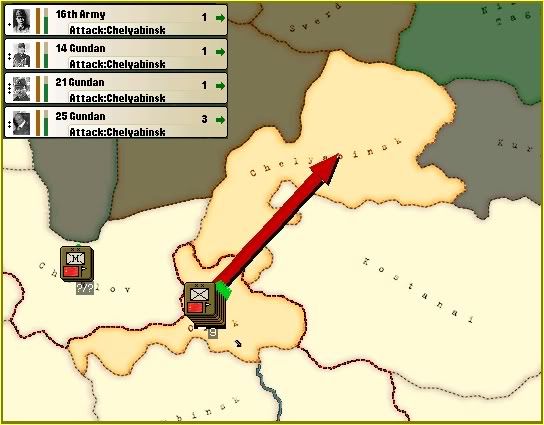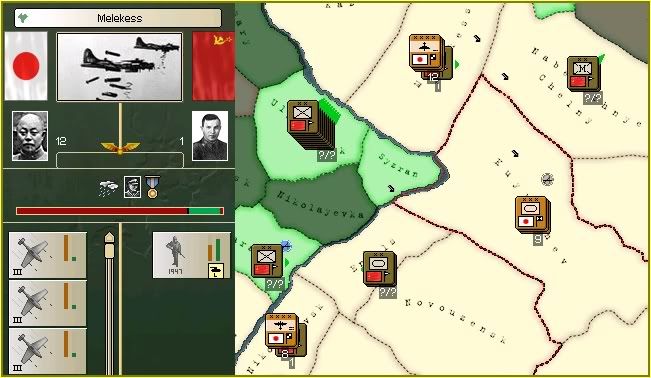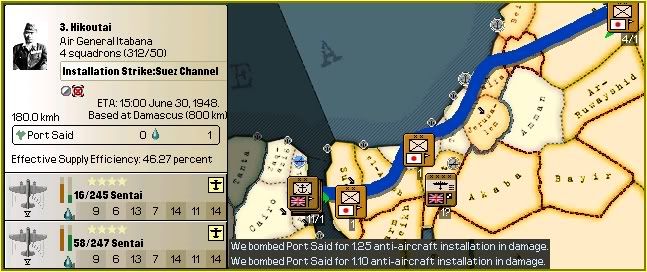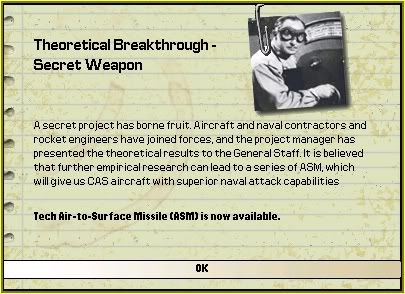Operation Enlightenment
7
7
0200 June 17th 1948.
East Asia Army Headquarters. Semipalatinsk, Soviet Union.
The general advance by the East Asia Army had met with only limited resistance as the shrinking and overstretched Red Army tried in vain to plug massive holes in it's lines. Newly recruited Soviet divisions found themselves hastily deployed into areas already well controlled by Japanese forces.
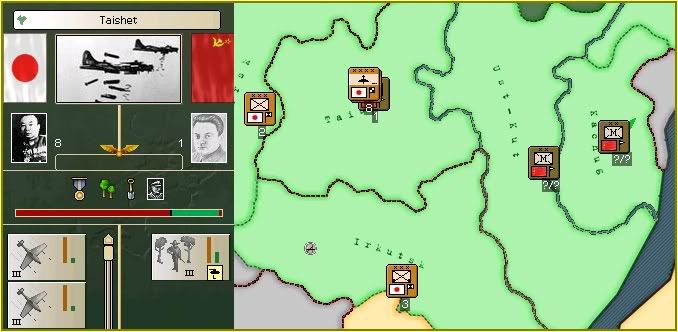
Irkutsk had seen some enemy arrivals before but this time there were more divisions across a wider area. Terauchi had recently allowed Nakajima's Dive bomber group to move west to Batum in preparation for supporting attacks in that region which left Irkutsk without air cover. Shimoyama had no targets close to Semipalatinsk and was ordered to Irkutsk, which was fairly close, to contain any possible explansion or additional reinforcing of the Soviet lines.
0000 June 18th 1948.
Security Offices. Tokyo, Japan.
Uprisings were not very common despite the large amount of territory that Japan controlled with the possibility of such rebellions. China was the longest standing thorn in Hakujiro's side but it was very well policed in the most part. Other parts of the World were providing more problems for the Security Minister.
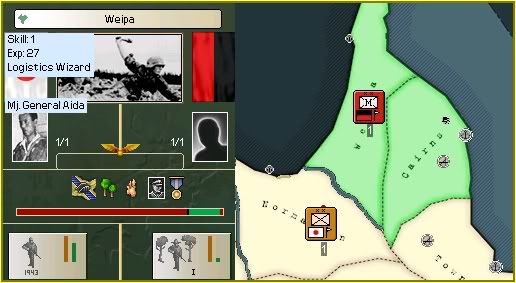
The latest revolt occured in Australia which was showing little sign of accepting the Emperor's rule. Mj. General Aida quickly put down the uprising that had occured in Weipa province but more were likely to follow. The arrival of a small number of Garrison divisions in the Country had stabalised some areas, but the week long voyage coupled with a month long redeployment that followed meant that it took a very long time to place such anti-partisan troops.
1700 June 18th 1948.
Central Asia Army Headquarters. Voroshilovsk, Soviet Union.
Progress for the Central Asia Army was swift with little enemy interference as Obata ensured that Hata's opponent had no opportunity to form a defensive line or build up his forces opposite the Japanese Commander.
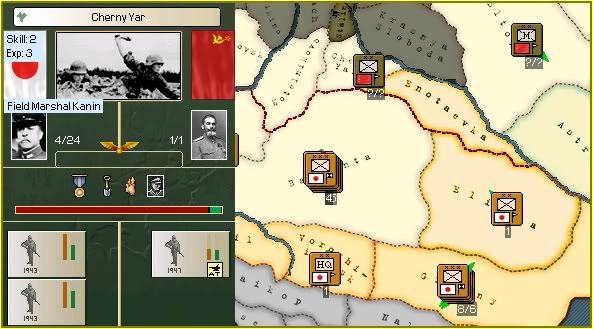
Field Marshall Kanin was at the head of the large army moving through Bashanta and was given the task of moving north towards Stalingrad. The enemy division in Cherny Yar had already been weakened by both ground attacks from bombers and combat and stood no chance of holding Kanin up for long. Hata still refused to allow his Tactical bomber group to operate out of Interceptor cover except over the Crimea.
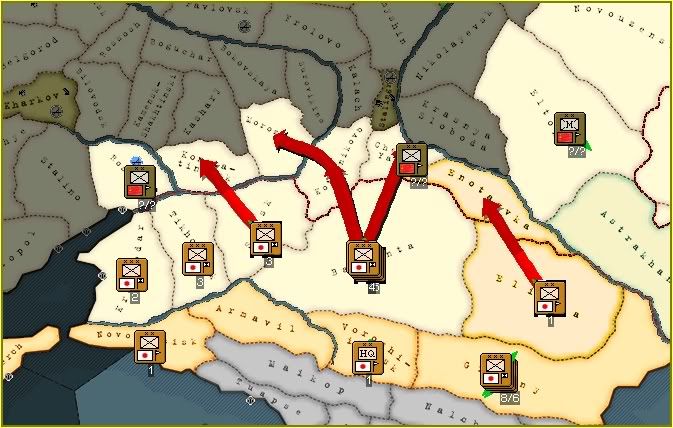
Hata's Strategic map showed developments along the Central Asia Army's front and there was precious little in the way of enemy forces to prevent any moves already underway. The envelopment of Rostov was almost complete which would allow a three pronged attack on that city as the main part of Hata's Army continued to advance towards Morozovsk. Several attempts had been made to cross towards Kerch, in the Crimea, but all such attempts were halted before any progress could be made.
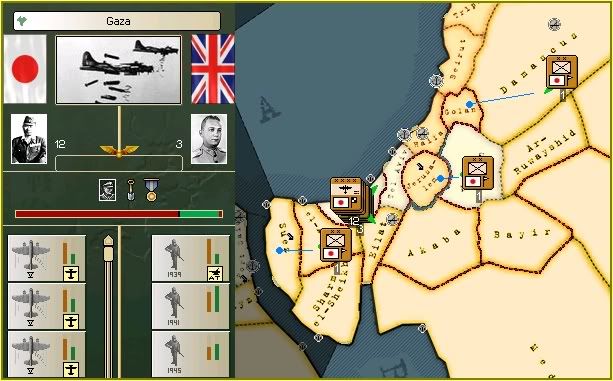
The Middle East was not going quite so well for Hata. Kawashima's position was not looking any better and had in fact worsened as another Allied division landed in Gaza. Hata had decided that rather than retreat he would advance instead. General Abe was making his way towards Jerusalem in support as Hata ordered Kawashima to advance towards Suez, away from his own safer lines which were under threat from advancing enemy forces. The enemy was moving towards both Tel Aviv and Eilat, either of which would isolate Kawashima and probably cost him his division.
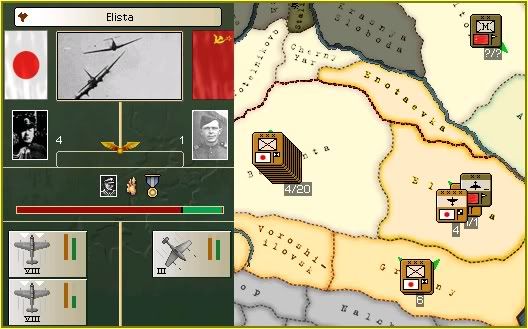
Late on June 19th a lone Soviet Dive bomber squadron had dared to attack Hata's Headquarters which had now moved into Bashanta. The response was to send Fukudome after the enemy aircraft and he caught them in the early hours of June 20th. This particular bomber squadron would see no further action after being totally destroyed over Elista.
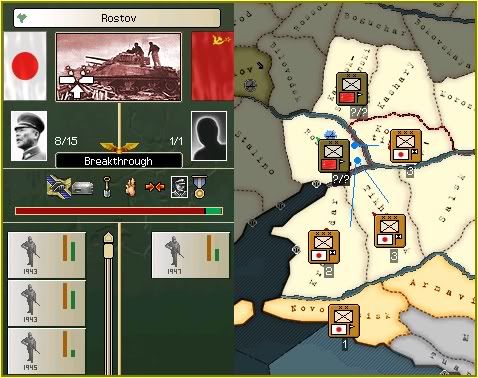
At 1000 hours on June 20th Lt. General Honda arrived in Konstatinovsk which allowed an enveloping assault to be launched against Rostov. There could have been quite a few defenders in the province but it was in fact poorly defended which allowed General Koiso to easily overpower the single division after achieving a breakthrough.
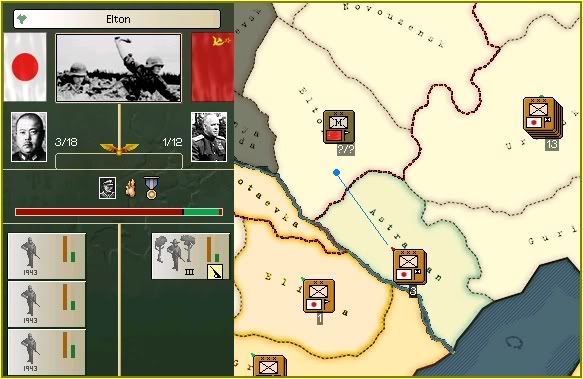
Hata's second in command, General Yamashita, had been advancing before the rest of the Central Asia Army and finally arrived in the marshes of Astrakhan at 1600 hours on June 20th. Field Marshall Zhukov, now commanding a Militia division, had launched a counter attack which had easily been repulsed and led to Yamashita attacking Zhukov and forcing the Soviet commander to retreat.
1600 June 20th 1948.
North China Army Headquarters. Uralsk, Soviet Union.
In contrast to the advances by Hata, Higashikuni was attacking across a mostly narrower front, as his strike force headed towards Kuybyshev with the majority of his Infantry protecting any retreat path.

Lt. General Hoshinata arrived in the vital Strategic province of Kuybyshev at 1600 hours on June 20th where he found a large numbers of enemy troops facing him in almost every direction. The Soviet's did not launch any counter attack against the Japanese Armour, despite their obvious numerical advantage, which led to Higashikuni ordering both Nakajima and Obata to move forwards and use the captured airbase in the province. The loss of twenty five factory complexes would also damage Soviet Industry severely.


